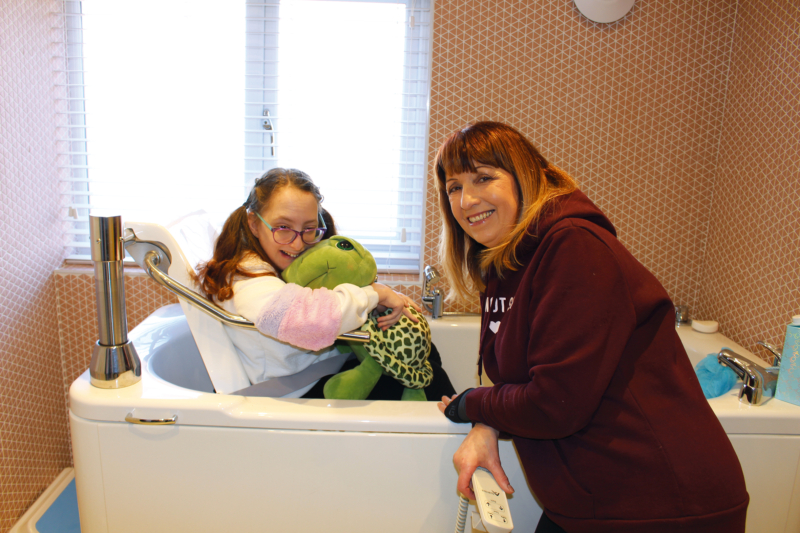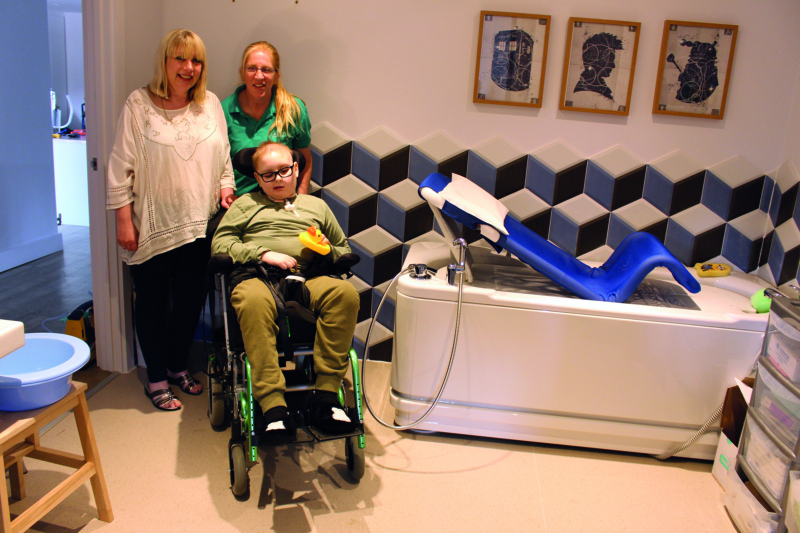Managing risks with bathing: Occupational Therapy tips for safe and independent self-care
![]() By Lauren Hopkins, Occupational Therapist
By Lauren Hopkins, Occupational Therapist
Bathing can be a personal and essential activity for our physical health, mental health, wellbeing, and overall quality of life. However, safety can be compromised for many individuals due to aging, disability, injury or environmental constraints. One of our key roles in occupational therapy practice is to enable individuals to engage in their self-care by understanding needs and wants and evaluating whether the environment supports or inhibits functioning, risk, and independence.

Common risks associated with bathing
- Falling and slipping – the bathroom itself can be a hazardous environment due to water and steam making surfaces wet and slippy. For individuals with limited mobility, balance challenges, muscle weaknesses or who are particularly prone to falls, wet surfaces such as, the floor and/or the bath tub can increase the risk of slipping and falling during transfers which in turn increase the risk of injury.
- Burns – some individuals you support may present with sensory loss or cognitive impairments where they may not recognise the temperature of the water (either too cold or too hot) causing burns or discomfort. Likewise, your client may present with reduced mobility meaning that they could present as slower to respond safely when contacting the hot water and/or at increased risk of falling when attempting to get out of the bath more quickly.
- Skin integrity – reduced mobility may also inhibit your client’s ability to reach and wash parts of their body which can increase the risk of skin infections, sores, and poor personal hygiene.
- Fatigue – the physical demands of bathing itself for individuals with limited endurance could find the activity overwhelming and exhausting.
- Sensory awareness/stimulation – bathing is a multi-sensory experience. For some individuals, the combination of sensory stimuli (water temperature, tactile feedback from the bath, smells) could be over-stimulating leading to a risk of disengagement and/or dysregulation.
- Cognitive impairments – cognitive impairments can cause individuals to forget the steps involved in bathing, leading to disorientation, anxiety and/or unsafe environmental behaviours such as, flooding.
- Privacy and dignity – for many individuals who perhaps require assistance from others during bathing, they could feel a loss of dignity and their sense of achievement.
- Seizure activity – the associated risk being the bather having a seizure when in the bath and submerged in water.

Practical strategies
Whilst developing independence is key when offering support, ensuring safety is also paramount. As occupational therapists we are continually evaluating and assessing the person, their environment, and their occupations to understand the interplay and impact upon their performance and functioning. Assessment is the first vital step all occupational therapists perform to gain a holistic understanding of their client and their needs in order to implement strategies to support.
Some occupational therapy focused strategies often embedded into practice to support bathing below include:
Guidance –education on how to use devices and/or equipment to teaching safer transfers when getting in and out of the bath. For some individuals, offering guidance on how to maintain personal hygiene to prevent infections is also helpful.
Activity analysis – activity analysis is used frequently by occupational therapists. It involves breaking the activity (bathing) down into smaller, more manageable steps to gain a better understanding on how the activity could be modified and/or adapted to support engagement. Not only does this strategy encourage personalisation, it can also highlight where adaptions/equipment is needed, and consider safety of the task. For example, this strategy can be particularly helpful for individuals to conserve their energy, reduce strain on their joints, and develop their processing and sequence skills to engage in the activity.
Collaboration with other professionals and/or carers/family members, working together to provide appropriate support without compromising individuals’ autonomy.
Cognitive strategies – use of visual cues, checklists, reminder systems, and/or visual schedules are all helpful cues to support safety with bathing.
Equipment and assistive technology – Adaptive equipment is designed to enhance safety, comfort, and independence with bathing. Equipment can also reduce the need for assistance/care, improve personal hygiene, and reduce caregiver strain. Outcomes from occupational therapy assessments may highlight the need for equipment or specialist adaptations such as the Gemini MX.
Model application – Understanding where we can have the greatest impact in managing the risk is a good starting point. All models of practice, whilst using different language to express it, reflect on the correlation between the individual, their environment and the activity they’re engaging in. Whilst we actively engage in a range of approaches, adapting the environment is often easier and more appropriate than changing the person’s routines. For example, using the example of the person with epilepsy, adapting the environment to support safe bathing through the Gemini MX, where the water can be taken away from the person rather than needing to remove the person from the water. Adapting the environment in this way facilitates engagement in the activity with minimal disruption to routine, whilst also managing risk.
Occupational therapists play a vital role in assessing the risks and offering practical solutions and strategies to clients to enhance their safety and independence in bathing. This not only helps create a safer environment, but reduces the risks associated with bathing and ensures that the clients we support feel confident and safe in their daily routine.

